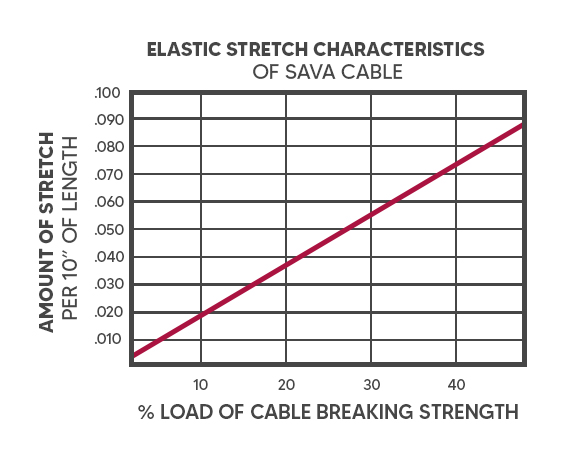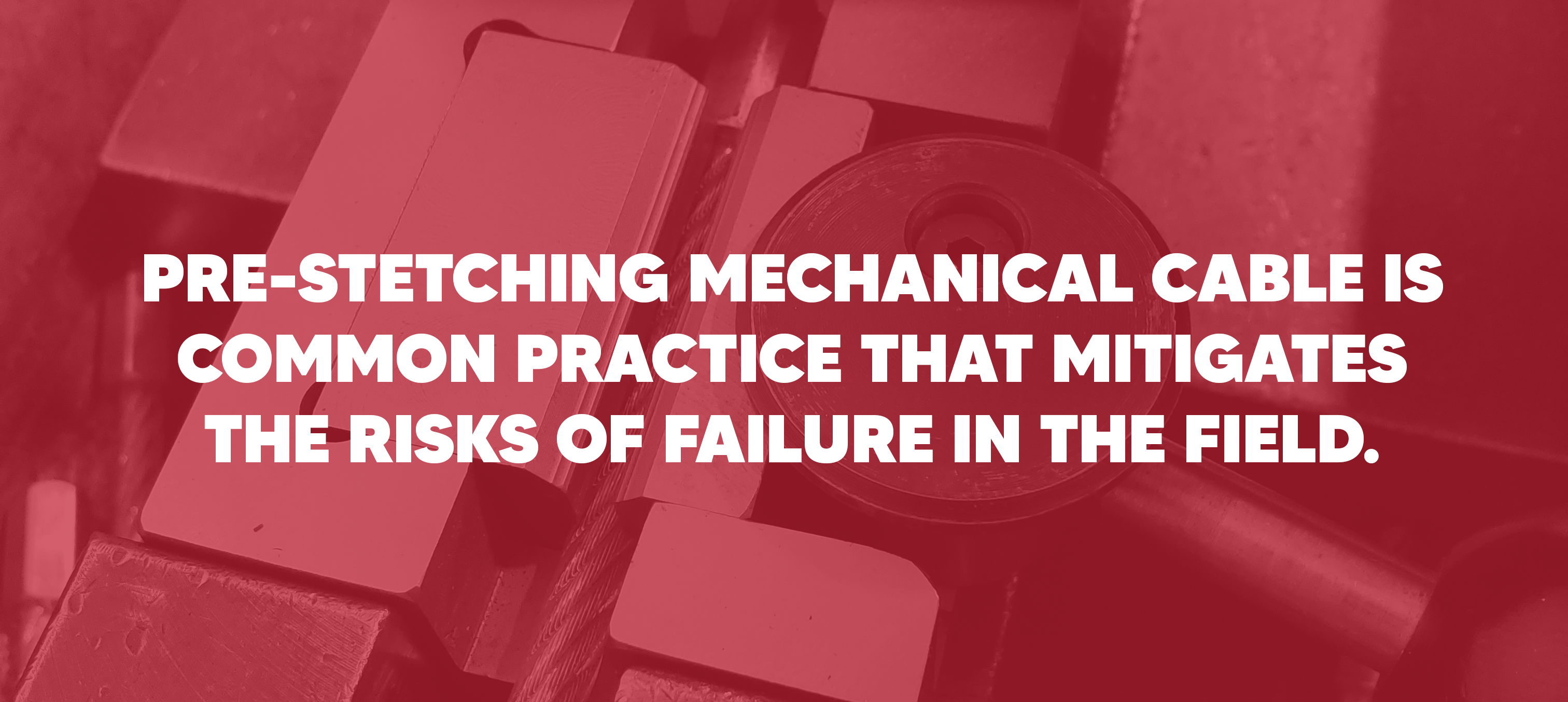Most things we encounter in daily life naturally possess the ability to stretch. Take rubber bands or balloons, for instance. We all know rubbers, or things made of rubber stretch, sure. But did you know that even metals stretch?
They do. All metals actually experience stretch, under certain loads, and so accordingly, mechanical cable stretch occurs too in the wire rope used in surgical robots, endoscopic instruments, along with bridges, buildings and heavy machinery.
Mechanical cable, also known as wire rope, is made of metal wires helically twisted together. Cable wire counts can be as few as two and as many as several hundred. The wire count, combined with the material and a host of other factors, informs the presence of cable stretch immediately upon manufacturing mechanical cable, straight on through a cable’s entire lifespan.
Cable stretch increases as the experienced tension increases. There are two types of cable stretch. The first kind of stretch mechanical cable experiences is known as constructional stretch, and the second being elastic stretch. In applications requiring cables experiencing tension, being taut, stretch is bad because as time goes on and the cable is in frequent use, the cable will lose tightness under constant tensile forces. Take tungsten cable, for instance, which is commonly used in surgical robots. Tungsten cable is among the strongest mechanical cables made, yet even so, as the number of cycles increases over the number of pulleys, the cable nears the end of its lifespan. To prevent or even mitigate complications caused by stretch, and to best maximize the lifespan of your cable, it is of utmost importance to understand the causes of both constructional and elastic stretch, as well as what to do to remove any unwanted stretch.
Browse Our Mechanical Cable
Constructional Stretch
The die that brings mechanical cable strands closer together is known as the closing die. When cable is manufactured, there are small air pockets or gaps that exist between the wires and strands, or alternatively the strands and core. When the initial load is applied to the finished cable, it causes the wires and strands to nest properly within the initial stranding gaps, developing a slight elongation of the cable. This is what is known as constructional stretch.
Constructional stretch varies from cable to cable. Lay length, which is the pitch of the strands helically revolved around a core (center) wire, influences the presence of constructional stretch. Generally, the tighter the lay length, the more cable experiences stretch; the longer the lay length, the less stretch is likely to be present. Additionally, constructional stretch is dependent on other factors, including cable construction and application load. Take for example, cable construction. Cable configurations comprised of small wire counts are likely to stretch less, since there is less material making up the cable (fewer monofilaments). Conversely, as wire counts increase, cables are likely to stretch more.
In the case of application loads affecting constructional stretch, be sure to match the cable with an appropriately rated load for the application. That way, the cable can move past the constructional stretch and experience elastic stretch during its usage.
Elastic Stretch
Elastic stretch is the elongation of the wires of a strand or cable, which is caused by a load up to the yield point of the metal material. The yield point, which is essentially the elastic limit, is the point at which the material loses elasticity – or the ability of a material to return to its normal size and shape after being deformed in some way. Provided the yield point of the metal material was not reached, the strand or cable will return to their original length when the load is released.
The elastic stretch is proportional to the application load, as shown in the graph below for a certain mechanical cable.


As the load increases, the amount of stretching increases as well. While this is true for all cables experiencing elastic stretch, the data will differ depending on the material, construction, and load. As the load increases, the amount of stretching increases as well.
Removal of Stretch
Where the elimination of the maximum amount of stretch is mission-critical, for instance in the case of surgical robotic applications, an operation known as pre-stretching can be used to remove most of the constructional stretch and ensure that adjustments are infrequently needed to maintain proper tension in a system. Pre-stretching is done only on a cable itself, applying 60% of the cable’s rated breaking strength to properly fit the wires and strands together. It is important, however, to understand that this is different than an operation known as proof loading. Similar to pre-stretching, cable engineers apply 60% of a specified load, however proof loading is applied to a completed cable assembly, rather than just the individual strand or cable, to ensure that the load can be held on the swaged fittings.
On the contrary, elastic stretch cannot be removed. This is due to the fundamental science dictating that all materials have some degree of elasticity, where they can return to their normal state after being deformed in some capacity.


Avoiding Obstacles after Removing Stretch
Once the proof loading and pre-stretching operations are complete, be sure to both:
REDUCE HANDLING
Reduce the handling of the cable, such as flexing the cable, to help eliminate the possibility of reintroducing constructional stretch by once more relaxing the individual wires within the mechanical cable.
MATERIAL DYNAMICS
Note that the diameter of your mechanical cable may theoretically shrink slightly, and the length may expand as the wires and strands nest together. This is crucial to consider in applications where success is critical, such as in medical devices, where the cable is expected to make near-perfect tolerances and predictably achieve a maximum lifespan. Manufacturers will generally compensate for this constructional stretch during their assembly processes to ensure finished mechanical cable assemblies join with mating components, within a live system, effortlessly and optimally.
Conclusion
Depending on cable construction, material, lay length, and load applications, mechanical cable may experience stretch, or elongation of its individual components. There are many ways to alleviate this constructional and elastic stretch when producing mechanical cable. In the case of pre-stretched cable, engineers are applying 60% of a rated breaking strength to the cable, ensuring that the individual wires and strands nest together optimally in your application. However, in proof-loading, the engineers are applying that same load to a completed cable assembly to verify it can endure specified loads.
Carl Stahl Sava Industries is an industry leader in the design and manufacture of mechanical cable assemblies. Contact our design engineering and sales team to make a more informed decision and to begin designing your cable solutions today!









